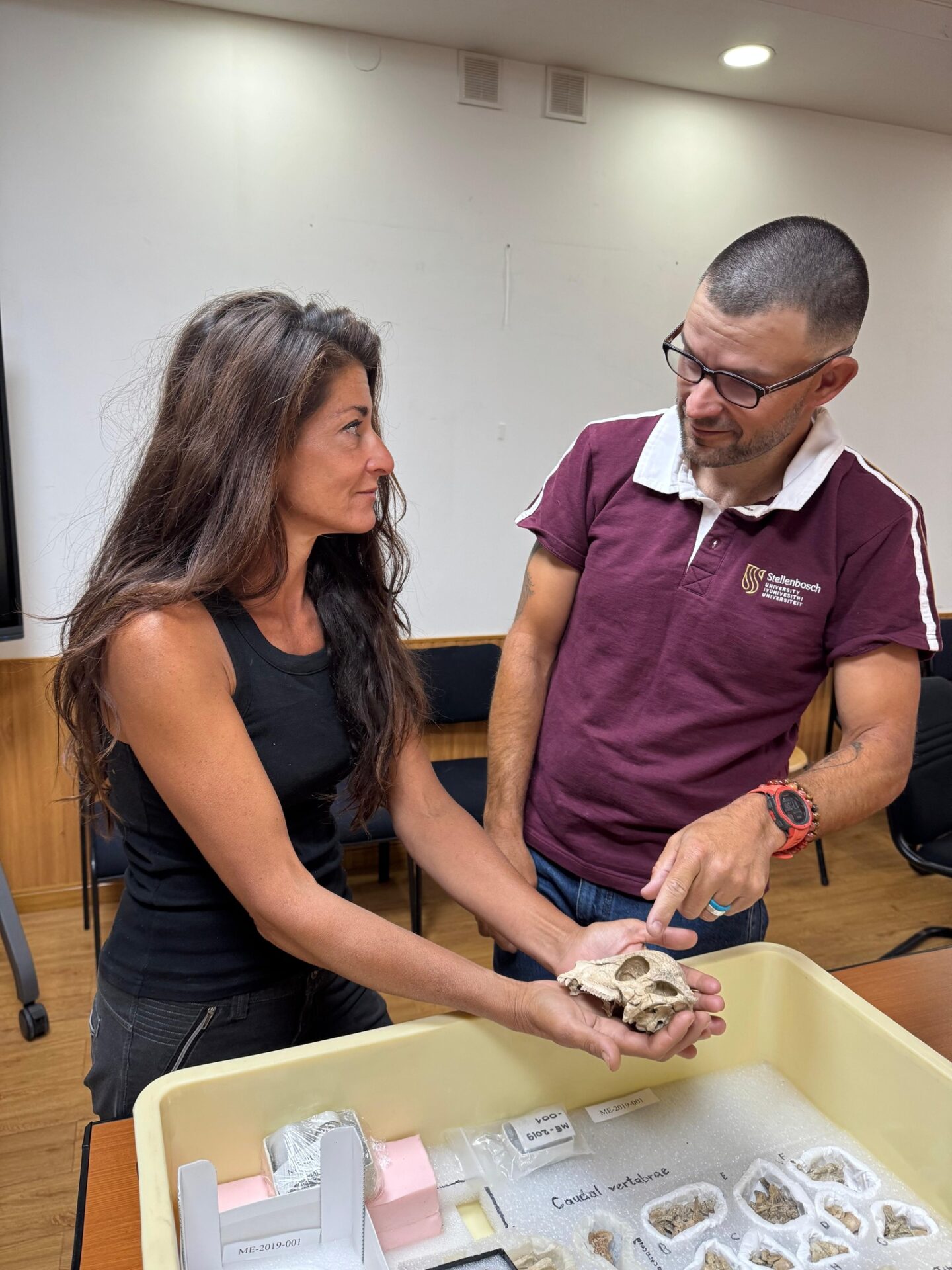A South African scientist has played a part in one of the most exciting fossil finds in recent years!
South Africa (30 September 2025) – In 2023, Stellenbosch University’s Dr Ryan Tucker joined an international team of researchers in Mongolia’s Gobi Desert, working alongside Dr Lindsay Zanno from the North Carolina Museum of Natural Sciences, colleagues from Japan, and the Mongolian Academy of Sciences’ Tsogtbaatar Chinzorig.
The Gobi might look a bit harsh and empty today, but over 100 million years ago, it was home to rivers, lakes, and lush valleys that formed the perfect playground for dinosaurs.
Over time, layers of sand and stone buried their remains, turning the desert into one of the richest fossil treasure chests on the planet.
Dr Tucker is a geologist whose research focuses on sedimentology, stratigraphy and palaeontology. This means that he doesn’t just study fossils, but also the ancient rocks around them. Those rocks are just as important as the bones themselves because they hold clues about the climate and landscapes dinosaurs once roamed.
In this case, the team was trying to better understand life during the Cretaceous, one of the hottest periods in Earth’s history.
The rare find came when they uncovered the 108-million-year-old remains of a new species of dome-headed dinosaur, now named Zavacephale rinpoche, buried in the Khuren Dukh Formation. Pachycephalosaurs, the family it belongs to, are plant-eating dinosaurs known for their thick, rounded skulls which scientists think were used for showing off and competing for mates.

What makes the discovery so special is just how complete it is. This specimen is surprisingly intact with a full dome, limb bones, and even stomach stones (gastroliths) that helped it grind up food. The researchers could even study its bones and confirmed that, despite its fully formed dome, this particular dino was still a teenager when it died.
The discovery pushes the pachycephalosaur family tree back by at least 14–15 million years, filling a pretty huge gap in what scientists knew about their early evolution. Well done to Dr Tucker and everyone involved!

